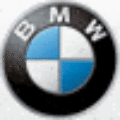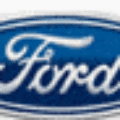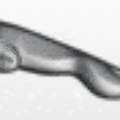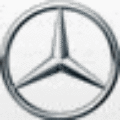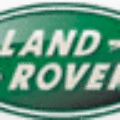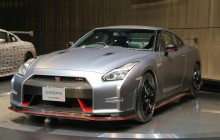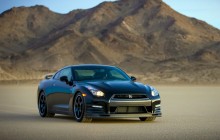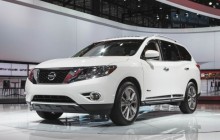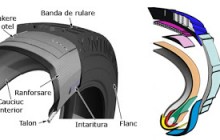NISSAN Car: Expert reviews and news
Nissan Motor Company, Limited, usually shortened to Nissan is a Japanese multinational automotive manufacturer headquartered in Nishi-ku, Yokohama, Japan.
In 1999, Nissan entered a two-way alliance with Renault S.A. of France, which owns 43.4% of Nissan, while Nissan holds 15% of Renault shares, as of 2008. Nissan also owns a 1.54% stake in Daimler AG of Germany, and a 43% stake in Nissan Shatai of Japan. Along with its normal range of models, Nissan also produces a range of luxury models branded as Infiniti. Nissan has one joint-venture in China (Donfeng) and one in Indonesia (Nissan Motor Indonesia). As of 2011, the company’s global headquarters is located in Nishi-ku, Yokohama. Nissan was the sixth largest automaker in the world behind Toyota, General Motors, Volkswagen Group, Hyundai Motor Group, and Ford in 2012.[8] It formerly marketed vehicles under the “Datsun” brand name. In July 2013, Nissan announced the relaunch of Datsun as a brand targeted at emerging markets.
Masujiro Hashimoto founded the Kwaishinsha Motor Car Works in 1911. In 1914, the company produced its first car, called DAT.
In 1928, Yoshisuke Aikawa founded the holding company Nihon Sangyo. The name ‘Nissan’ originated during the 1930s as an abbreviation used on the Tokyo stock market for Nihon Sangyo. This company was the famous Nissan “Zaibatsu” (combine) which included Tobata Casting and Hitachi. At this time Nissan controlled foundries and auto parts businesses, but Aikawa did not enter automobile manufacturing until 1933.
From 1934 Datsun began to build Austin Sevens under licence. This operation became the greatest success of Austin’s overseas licensing of its Seven and marked the beginning of Datsun’s international success.
In 1952, Nissan Motor Company of Japan entered into a legal agreement with Austin, for Nissan to assemble 2,000 Austins from imported partially assembled sets and sell them in Japan under the Austin trademark. The agreement called for Nissan to make all Austin parts locally within three years, a goal Nissan met. Nissan produced and marketed Austins for seven years. The agreement also gave Nissan rights to use Austin patents, which Nissan used in developing its own engines for its Datsun line of cars. In 1953, British-built Austins were assembled and sold, but by 1955, the Austin A50 – completely built by Nissan and featuring a new 1489 cc engine—was on the market in Japan. Nissan produced 20,855 Austins from 1953–1959.
In the 1950s, Nissan decided to expand into worldwide markets. Nissan management realized their Datsun small car line would fill an unmet need in markets such as Australia and the world’s largest car market, the United States. They first showed cars at the 1958 Los Angeles Auto Show and sold a few that year in the United States. The company formed a U.S. subsidiary, Nissan Motor Corporation U.S.A., in 1960, headed by Yutaka Katayama. Nissan continued to improve their sedans with the latest technological advancements and chic Italianate styling in sporty cars such as the Datsun Fairlady roadsters, the race-winning 411 series, the Datsun 510 and the world-class Datsun 240Z. By 1970, Nissan had become one of the world’s largest exporters of automobiles.
In the wake of the 1973 oil crisis, consumers worldwide (especially in the lucrative U.S. market) began turning to high-quality small economy cars. To meet the growing demand, the company built new factories in Mexico, Australia, New Zealand, Taiwan and South Africa. The “Chicken Tax” of 1964 placed a 25% tax on commercial vans imported to the United States.
In response, Nissan, Toyota Motor Corp. and Honda Motor Co. began building plants in the U.S. in the early 80s. Nissan’s initial assembly plant, in Smyrna, Tennessee, at first built only trucks such as the 720 and Hardbody, but has since expanded to produce several car and SUV lines, including the Altima, Maxima, Xterra, Pathfinder and LEAF. The addition of mass-market automobiles was in response to the 1981 Voluntary Export Restraints imposed by the U.S. Government. An engine plant in Decherd, Tennessee followed, most recently a second assembly plant was established in Canton, Mississippi. In order to overcome export tariffs and delivery costs to its European customers, Nissan contemplated establishing a plant in Europe. After an extensive review, Sunderland in the north east of England was chosen for its skilled workforce and its location near major ports. The plant was completed in 1986 as the subsidiary Nissan Motor Manufacturing (UK) Ltd. By 2007, it was producing 400,000 vehicles per year, landing it the title of the most productive plant in Europe.
In 2001, Nissan established a manufacturing plant in Brazil. In 2005, Nissan added operations in India, through its subsidiary Nissan Motor India Pvt. Ltd.[34] With its global alliance partner, Renault, Nissan invested $990 million to set up a manufacturing facility in Chennai, catering to the Indian market as well as a base for exports of small cars to Europe.
Nissan entered the Middle East market in 1957 when it sold its first car in Saudi Arabia. Nissan sold nearly 520,000 new vehicles in China in 2009 in a joint venture with Dongfeng Motor. To meet increased production targets, Dongfeng-Nissan expanded its production base in Guangzhou, which would become Nissan’s largest factory around the globe in terms of production capacity.
In 2014, Nissan cars will be produced by Renault-Samsung in South Korea. This production will start with 80000 Nissan Rogue/X-Trail produced by Renault-Samsung Busan factory in South Korea, instead of being produced by Nissan in Japan.
Nissan has produced an extensive range of mainstream cars and trucks, initially for domestic consumption but exported around the world since the 1950s. There was a major strike in 1953.
It also produced several memorable sports cars, including the Datsun Fairlady 1500, 1600 and 2000 Roadsters, the Z-car, an affordable sports car originally introduced in 1969; and the GT-R, a powerful all-wheel-drive sports coupe.
In 1985, Nissan created a tuning division, Nismo, for competition and performance development of such cars. One of Nismo’s latest models is the 370Z Nismo.
Nissan also sells a small range of kei cars, mainly as a joint venture with other Japanese manufacturers like Suzuki or Mitsubishi. Nissan does not develop these cars. Nissan also has shared model development of Japanese domestic cars with other manufacturers, particularly Mazda, Subaru, Suzuki and Isuzu.
In China, Nissan produces cars in association with the Dongfeng Motor Group including the 2006 Nissan Livina Geniss. This is the first in the range of a new worldwide family of medium sized cars and is to make its world debut at the Guangzhou International Motor Show.
In 2010, Nissan created another tuning division,IPL, this time for their premium/luxury brand Infiniti.
In 2011, after Nissan released the Nissan NV-Series in the United States, Canada, and Mexico, Nissan created a commercial sub brand called Nissan Commercial Vehicles which focuses on commercial vans, pickup trucks, and fleet vehicles for the US, Canadian, and Mexican Markets, says Nissan Wiki page.
2015 All-new Nissan GT-R Nismo
 2015 All-new Nissan GT-R Nismo Nissan Motor Co., Ltd.,...
2015 All-new Nissan GT-R Nismo Nissan Motor Co., Ltd.,...2014 All-new Nissan GTR Track Edition
 The 2014 model year features the introduction of a...
The 2014 model year features the introduction of a...2014 New Nissan Pathfinder Hybrid
 The Pathfinder’s new Hybrid powertrain option will be available...
The Pathfinder’s new Hybrid powertrain option will be available...Wheels are Key Parts of Nissan Spares to Find
 Wheels are Key Parts of Nissan Spares to Find...
Wheels are Key Parts of Nissan Spares to Find...
See more automotive news now!



